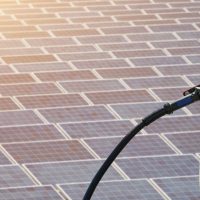In March 2022, the federal government released its 2030 Emissions Reduction Plan (ERP). This was a first major milestone under the Canadian Net-Zero Emissions Accountability Act (the Act), which established a climate accountability framework for Canada.
The next milestone under the Act is rapidly approaching: the federal government is required to complete a progress report on the ERP by the end of 2023. We’ll be releasing our own independent assessment of Canada’s progress towards the 2030 target, just as we did following the release of the ERP.
While the Act outlines high-level requirements for what the government must include in the ERP and progress reports, it leaves significant room for interpretation. Legal experts, for example, interpreted the Act to require the government to be more specific on policy implementation than what was included in the first ERP.
Ultimately, the level of detail that the government includes in the ERP progress report is crucially important for the sake of transparency, public accountability, and taking stock of progress. The more the report focuses on policy implementation and outcomes, the better positioned the government will be to identify where policies are off track and how to course correct to keep Canada’s 2030 target in sight.
Getting the details right will matter to Canada’s emissions reduction aspirations. In this blog, we outline four elements of an effective progress report.
1. Updates on policy implementation are detailed and comprehensive
According to the Act, the federal government must provide an update on implementation of policies outlined in the ERP. To effectively track progress, this update must be detailed and comprehensive.
In our view, and consistent with the view of legal experts, the progress report should include a line-by-line review of the policies and measures outlined in the March 2022 ERP, as well as any new policies that were introduced in the 18 months that followed. This policy review should summarize how measures have progressed through the policy process, identify where policy implementation is on or off track, and clarify the government’s next steps to deliver on policy commitments.
The line-by-line review should include information about the current status of the policy—whether the measure is legislated or still under development. It should identify if policy implementation is delayed, and if so, why. And it should provide information about the key implementation risks facing each policy—whether political, technical, financial, or regulatory—and how the government plans to address them.
Critically, the policy review should build off the implementation tables in the ERP by including timelines, costs, and responsible departments for all policies, not just a select few. There are a number of policies from the ERP with little to no detail, making it almost impossible to track progress. This is most notable in oil and gas and buildings—two sectors where policy and emissions reduction progress has been especially slow.
Finally, the government is also required to provide an update on cooperative measures with provinces and other orders of government, recognizing that governments across Canada have a crucial role to play in reducing emissions.
2. Emissions projections are based on concrete policies and broken down annually and by sector
The Act also requires that the federal government publish emissions projections for 2026 and 2030 targets in advance of publishing the ERP update, outlining expected reductions from federal policies, alongside actions from other orders of government. How these projections are modelled and presented matters for transparency and accountability.
First and foremost, emissions projections should be based on legislated and developing policies with some detail on stringency, timelines, and coverage. In the ERP, the government filled in the emissions gap between the policy package and the 2030 target by “backcasting” from 2030 (where the model identifies the most cost-effective opportunities by sector to close the gap). While this approach can offer insights into the role of different sectors on the path to 2030, it does not replace a credible emissions pathway based on tangible policies. To suggest that a backcast puts Canada on track to 2030 ignores the very real need to implement concrete policies to achieve the target.
Second, to match the approach taken in the ERP, the progress report should break emissions down annually and by sector from 2022 onwards. Sector detail adds clarity about the role that different sectors play in contributing to Canada’s emissions reduction targets, as well as information about which sectors are making the most progress today and which ones require more policy attention.
Finally, if the emissions projections indicate that the 2026 and 2030 emissions reduction target will not be met with current policies, the government is required to outline how it might course correct, including any additional measures that could be taken to meet the target. The ERP progress report should identify potential opportunities to close any gaps to 2026 and 2030, whether by proposing new policy measures or identifying where existing policies can be tightened or adjusted to enhance their cost-effectiveness.
3. Progress report provides clarity and transparency about modelling assumptions
According to the Act, the ERP progress report can include “any other information that the Minister considers appropriate.” To provide clarity and transparency about the assumptions underlying the emissions reduction projections, the progress report should include details about the government’s modelling and analysis.
Simply put, modelled projections are more useful when the assumptions behind them are transparent.
A modelling section in the progress report could include assumed activity levels across different sectors, the stringency and coverage of policies being modelled (including provincial and territorial actions), and assumptions for the costs and deployment of wild card technologies. The progress report should also show how the emissions pathway is stress-tested against alternative pathways to 2030. This would vary key drivers of uncertainty including policy implementation risk, energy prices, global climate action, and technology costs and feasibility, recognizing that there is no one pathway to Canada’s target.
The modelling section could also include results of independent modelling analysis to validate outcomes and highlight where results align or diverge. This would help identify potential risks as well as priorities for policy action and course correction. Such an exercise would also serve to demonstrate the credibility and robustness of Environment and Climate Change Canada’s modelling of policies and their emissions reduction outcomes.
4. Government identifies opportunities to continually improve how Canada tracks progress
The Act and the governance processes it established are only two years old. Naturally, this means that the government is learning-while-doing and adapting processes as it goes to better track and report on progress.
The upcoming progress report presents an opportunity for the government to signal areas where it plans to improve its processes for tracking and reporting on progress. This could take many forms, however, one major opportunity is to lay the foundation to track a more comprehensive set of progress indicators, beyond annual emissions data.
Developing and tracking a more comprehensive set of leading indicators of progress–including technology deployment and investment–would enable more timely stock taking, decision-making, and course correction. It’s also a move that’s been called for by many groups and will soon be a requirement under the UNFCCC, starting with next year’s first Biennial Transparency Report, which Canada must submit before December 31, 2024.
These indicators could be included as annexes in future progress reports, but should also be tracked more regularly—whether within government or outside of it. Other jurisdictions do this well, including the United Kingdom and France, and there are opportunities for Canada to learn from international experience and best practice.
No time to lose
The publication of the 2030 ERP was a pivotal moment for climate action in Canada. It marked the first, comprehensive plan to deliver on Canada’s emission reduction targets and the start of a new process for regular assessment and continuous policy improvement.
But a plan is only as good as its implementation. Quick and effective implementation of the policies laid out in the ERP, alongside action from other orders of government, is needed to keep Canada’s 2030 goal within sight. And with 2030 only seven years away, governments should seize every opportunity to take stock and course correct.
The upcoming ERP progress report presents an opportunity to transparently assess Canada’s progress to 2030 and identify opportunities to shift gears if emissions have fallen off course. To do so, Canada must implement the requirements of the Act in a way that includes comprehensive information about policy implementation, emissions reductions, and modelling analysis, while identifying opportunities to continually improve how Canada tracks climate policy progress.








